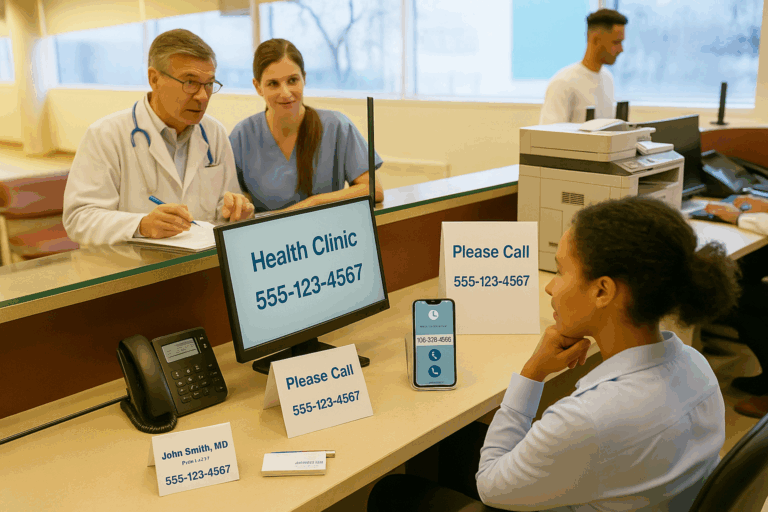The modern workplace often feels like a pressure cooker, where stress can quickly escalate into burnout for many employees. Approximately half of adults in the United States frequently feel stressed at work. Employees suffering from burnout are 63 percent more likely to take sick days, show less confidence in their work performance, and are more than twice as likely to leave their jobs.
Healthcare is an industry with exceptionally high levels of burnout. Much has already been written about physician burnout, which evidence shows leads to low patient experience and poor outcomes. According to a study published in the Journal of General Internal Medicine, 47 percent of physicians reported feeling burned out. Additionally, 24 percent said they planned to quit in the next two years.
Employees in non-clinical roles, sometimes referred to as allied health professionals, are often left out of the discussion about burnout in healthcare. The COVID-19 pandemic worsened burnout for many of these workers, compounded by long hours, heavy workloads, and ongoing staff shortages.
A high administrative burden does nothing to quell this burnout. In addition to diverting focus from clinically important activities, many time-consuming responsibilities—such as prior authorization and navigation of insurance claims—often stress staff and lead to turnover.
Nurses aren’t exempt from these tedious tasks. An estimated 15-28 percent of nurses’ work comprises low-value tasks primarily to satisfy administrative requirements.
The Big Deal About Burnout in Healthcare
The difference between occasional job stress and burnout is evident in the repercussions. Burnout is a psychological response to chronic workplace stress that can lead to feelings of exhaustion, increased mental distance from one’s job, negativity, cynicism, and reduced professional efficacy.
Burnout among healthcare professionals can stem from several factors, including increasing workload, inadequate support, lack of control and autonomy, a stressful work environment, and moral injury from the inability to meet patient needs and demands. It’s associated with the risk of mental health challenges, such as anxiety and depression, and can lead to increased absenteeism, reduced productivity, poor social relationships, and decreased job satisfaction.
Burnout doesn’t only impact healthcare workers; it can also have harmful consequences for patient care and safety, including:
- Decreased time spent between provider and patient
- Increased medical errors
- More hospital-acquired infections
- Staffing shortages
- Reduced patient satisfaction
- Lower quality of care
The Right Type of Healthcare Technology
As we mentioned in a previous blog, well-designed technology built for healthcare increases efficacy, reduces errors, improves quality of care, and enhances clinician, staff, and patient satisfaction. Conversely, poorly designed and deployed technology contributes to clinician burnout and a lack of professional well-being.
Healthcare technology consists of more than EHR systems and practice management software. Something as seemingly simple as a user-friendly patient communication system can alleviate some administrative responsibilities that drive burnout while enabling clinicians to spend more time with their patients.
How to Achieve Effective Practice Communication
Most physician practices receive an average of 53 calls per day. For larger medical groups, that number can reach up to 200 daily. Even before healthcare staffing shortages became prevalent, practice staff found it difficult to answer so many calls and give each patient calling the attention he or she deserved.
Today’s healthcare consumers don’t take too kindly to waiting on hold, either. About one-third of patients are unwilling to stay on the line, and almost 30 percent will only hold for one minute. Approximately 60 percent of patients will hang up after 60 seconds, and only 30 percent will call back.
If unanswered calls—and texts—become a more significant issue, it can affect a practice’s revenue, reputation, and capacity for patient retention. Team members who would otherwise handle more critical tasks might be forced to spend their time dealing with patient complaints, resulting in a chaotic and less functional office environment that, you guessed it, worsens burnout.
Effective communication is crucial in a well-run practice, and a Voice Over Internet Protocol (VoIP) phone system achieves that while allowing staff to handle patient information securely. For example, a HIPAA-compliant VoIP phone system featuring advanced call routing streamlines a practice’s communication flow by efficiently managing incoming calls.It ensures patients can easily reach the right provider to handle their requests and route calls based on staff responsibilities, minimizing patient hold times while improving employee satisfaction and productivity.
Call routing also reduces manual call transfers. Staff then has more time to focus on other pertinent tasks, increasing patient and front office satisfaction.
Reducing manual patient outreach is another way to decrease the number of administrative tasks for which medical practice staff are responsible. Automating this process enables healthcare professionals to send appointment reminders and other types of patient communications through voice, SMS text messaging and email. Reducing their workload helps keep patients updated and engaged, boosts loyalty, fills appointments, and prevents attrition.
Utilizing a feature-rich phone system with an on-call management platform also automates connecting callers with after-hours providers, resulting in fewer errors and a shortened response time. RingRx’s on-call capabilities include a powerful calendar, profile, and management system that lets each on-call provider set a custom profile, ensuring calls are managed correctly while reducing administration headaches and patient delays.
Addressing healthcare burnout is crucial for employees’ well-being and quality of patient care. By leveraging effective communication technology, such as HIPAA-compliant VoIP systems, practices can streamline operations, reduce administrative burdens, and create a more supportive environment for staff and patients. This approach enhances operational efficiency and fosters a culture of care, ensuring that healthcare providers can focus on what truly matters: delivering exceptional patient care.
Learn how RingRx can help you simplify your workflow, allowing you to work smarter, not harder. We serve all types of healthcare providers, and our HIPAA-compliant, VoIP-powered patient communication system can be customized to meet your specific business and patient care goals.




